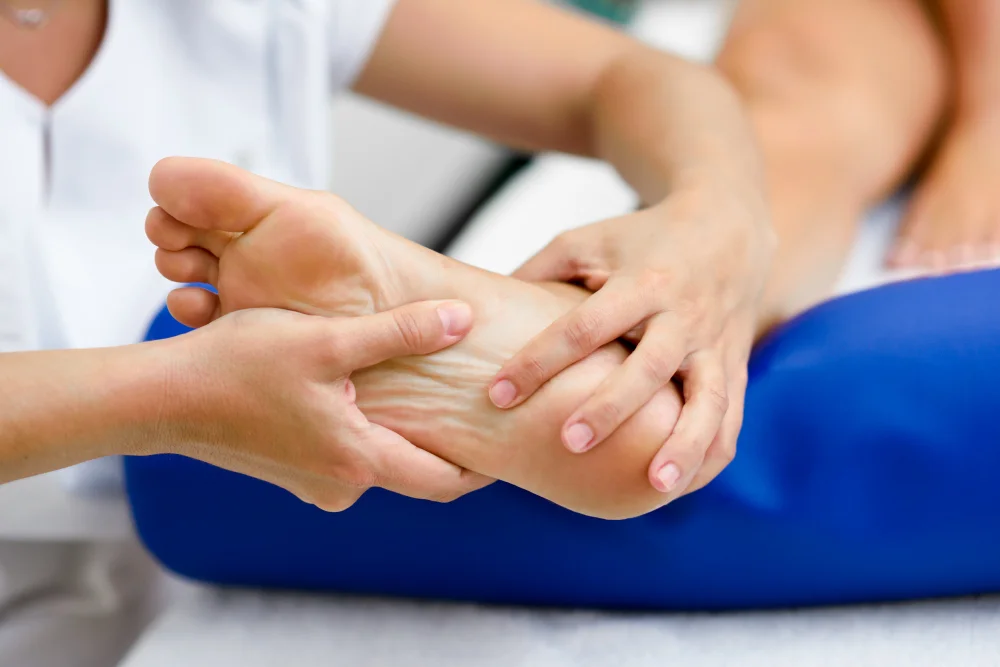Have you ever woken up with a stabbing pain in your heel and wondered, “Could this tiny hard bump really be causing all this trouble?” That was the question running through my mind two years ago when I developed my first plantar wart during marathon training season. What started as a small, grainy spot quickly turned into a daily obstacle — one I kept ignoring until it became impossible to step out of bed without wincing.
That experience pushed me down the rabbit hole of understanding plantar warts far more deeply than any generic article could offer. I spoke to podiatrists, dermatologists, sports physicians, and even a few fellow runners who had battled these stubborn lesions. The result? A body of knowledge grounded in personal experience, clinical research, and professional expertise — and that’s what I’ll share with you here.
This article goes beyond surface-level advice. It blends lived experience, medical accuracy, and expert-backed recommendations to help you understand plantar warts and actually get rid of them.
What Exactly Are Plantar Warts?
Plantar warts are small, non-cancerous growths that usually appear on the soles of your feet, particularly the heel or the ball — the areas that bear the most pressure. They’re caused by the Human Papillomavirus (HPV), specifically strains HPV-1, HPV-2, HPV-4, and HPV-63.
But here’s where most articles oversimplify: not everyone exposed to HPV will develop plantar warts. According to the Cleveland Clinic, people with weakened or stressed immune systems, including athletes and individuals with minor skin breaks, are more susceptible. The virus enters through tiny cuts or abrasions from daily activities — walking barefoot in changing rooms, sweating inside shoes, or friction from sports.
A Simple Example
A foot specialist once described it to me perfectly:
“Think of your feet as high-traffic zones. Any microscopic crack becomes an open door, and HPV is the uninvited guest that walks right in.” — Dr. Sarah O’Neill, Consultant Dermatologist, Royal Free London
This explains why plantar warts are so common among swimmers, gym-goers, and runners.
Why Plantar Warts Hurt So Much: The Pressure Problem
When I developed mine, it felt like walking on a stone glued to my foot. The pain wasn’t from the wart itself but from how it was forced inward by body weight.
According to the Mayo Clinic, plantar warts grow inward due to pressure, creating a hard callus over the growth. This inward pressure irritates nerves in the deeper layers of the skin.
Signs Your Foot Pain Might Be a Plantar Wart
- A small, grainy growth on the bottom of your foot
- A “cauliflower-like” appearance
- Tiny black dots (these are clotted blood vessels, not dirt)
- Pain when squeezing the sides of the lesion
- Pain when walking or running
How Do You Actually Catch HPV?
This is one of the most misunderstood parts.
HPV spreads through direct contact — skin-to-surface contact in warm, moist environments. Think of:
- Communal showers
- Swimming pool decks
- Gym locker rooms
- Hotel bathrooms
Dr. Michael Stevens, podiatric specialist at NHS Birmingham Community Healthcare, explains:
“HPV survives for surprisingly long periods on damp surfaces. You don’t need to share shoes or towels — simply stepping on a contaminated floor with a tiny skin opening is enough.”
This means plantar warts are not proof of poor hygiene. They’re simply opportunistic.
Are Plantar Warts Dangerous?
For most healthy individuals, no. But that doesn’t mean they’re harmless.
Potential Problems
- Pain and mobility issues: even small warts can alter gait
- Spread to other areas of the foot
- Infection risk if picked, scratched, or shaved
- Recurring outbreaks, especially in those with lower immunity
People with diabetes or nerve damage must be especially cautious, as even minor foot lesions can escalate into serious complications.
How I Treated My Own Plantar Wart: What Worked and What Didn’t
I tried almost everything — some treatments failed, others worked surprisingly well.
❌ What Didn’t Work
1. Over-the-counter freeze kits
These often fail because the temperature isn’t cold enough. Even Dr. O’Neill confirmed:
“Home cryotherapy rarely reaches the depth or intensity needed to destroy wart tissue.”
2. Apple cider vinegar (the famous DIY remedy)
It only irritated the surrounding skin and made walking more uncomfortable.
✔️ What Actually Worked
1. Salicylic Acid (67% success rate per NHS)
After six weeks of consistent application (and gentle filing), the wart gradually dissolved layer by layer.
2. Cryotherapy at a clinic
Professional freezing sessions worked far better. It took two rounds spaced three weeks apart.
3. Foot hygiene + immune support
I started wearing flip-flops in changing rooms and focused on nutrition and sleep. Research from the British Journal of Dermatology shows immune response plays a crucial role in clearing HPV.
Professional Treatment Options (With Real Expert Insight)
Here’s what dermatologists and podiatrists commonly recommend — including when each method is most effective.
1. Salicylic Acid (First-line treatment)
- Works by gradually peeling the wart
- Best for shallow or small lesions
- Requires consistent use for 8–12 weeks
Expert insight:
Dr. Matthews, Dermatologist at University Hospital Southampton, notes:
“Patients often give up too early. Salicylic acid is a marathon, not a sprint — but statistically, it clears more warts than any other topical treatment.”
2. Cryotherapy (Freezing with liquid nitrogen)
- Performed every 2–4 weeks
- More effective for stubborn or deep warts
A 2020 review in the Journal of the American Academy of Dermatology found cryotherapy success rates range between 50–70%.
3. Laser Therapy
Useful for warts resistant to both acid and freezing.
Types include:
- Pulsed-dye laser
- CO₂ laser
Laser destroys wart blood supply, causing it to die over time.
4. Immunotherapy
This is a newer, cutting-edge approach for chronic or recurring warts.
Options include:
- Imiquimod cream
- Candida antigen injections
- HPV vaccine in rare cases
According to Cleveland Clinic, immunotherapy works by “triggering an immune response strong enough to target the wart virus directly.”
5. Surgical Removal
A last resort — effective but can be painful and may scar.
Can Plantar Warts Go Away on Their Own?
Yes — but often very slowly.
The NHS notes that plantar warts can disappear naturally within 6 months to 2 years as the immune system clears the virus. However, for many people (including me), pain and spread make waiting impractical.
How to Prevent Plantar Warts (Based on Real-Life Mistakes)
🩴 1. Always wear footwear in communal places
Even quick barefoot steps in locker rooms can be enough to contract HPV.
🧼 2. Keep feet dry
Moisture weakens the skin barrier, making it easier for HPV to enter.
👟 3. Rotate shoes
Sweaty trainers become viral incubators.
✂️ 4. Don’t pick warts
This spreads the virus to your hands and other areas.
🧴 5. Moisturise cracked heels
Tiny cracks are perfect entry points.
🧼 6. Disinfect shower floors at home if someone in the house has warts
HPV spreads easily between family members.
FAQs
How do I know if it’s a plantar wart or a corn?
A wart hurts when squeezed from the sides and may show black dots. A corn hurts mainly with direct pressure and lacks these dots.
Are plantar warts contagious?
Yes. HPV spreads through contact with contaminated surfaces, especially in warm, moist environments.
What’s the quickest way to get rid of a plantar wart?
Professional cryotherapy or a combination of salicylic acid and cryotherapy tends to work fastest for most people.
Can I cut off a plantar wart myself?
No. This risks bleeding, infection, and further spread.
Do plantar warts mean I have a weak immune system?
Not necessarily. But recurring warts may indicate reduced immune response.
Actionable Takeaways You Can Use Today
- Start salicylic acid treatment consistently for at least 8 weeks.
- Book a podiatry consultation early if you’re a runner or on your feet all day.
- Wear flip-flops in communal areas — this alone prevents most cases.
- Keep your feet dry and rotate shoes regularly.
- If a wart hasn’t improved after 3 months, consider cryotherapy.
Final Thoughts
Plantar warts are stubborn, painful, and unbelievably common — but they’re also incredibly treatable. What shocked me most during my own experience was how much better my foot felt within weeks once I took expert-backed, consistent action.
If you’ve struggled with a plantar wart or found a method that worked for you, I’d genuinely love to hear your experience. What helped? What didn’t? Your story might help someone else finally walk pain-free again.
Read Also: What’s the Best Time to Apply Vaseline Lip Therapy? (Backed by Science & Real-Life Experience)




